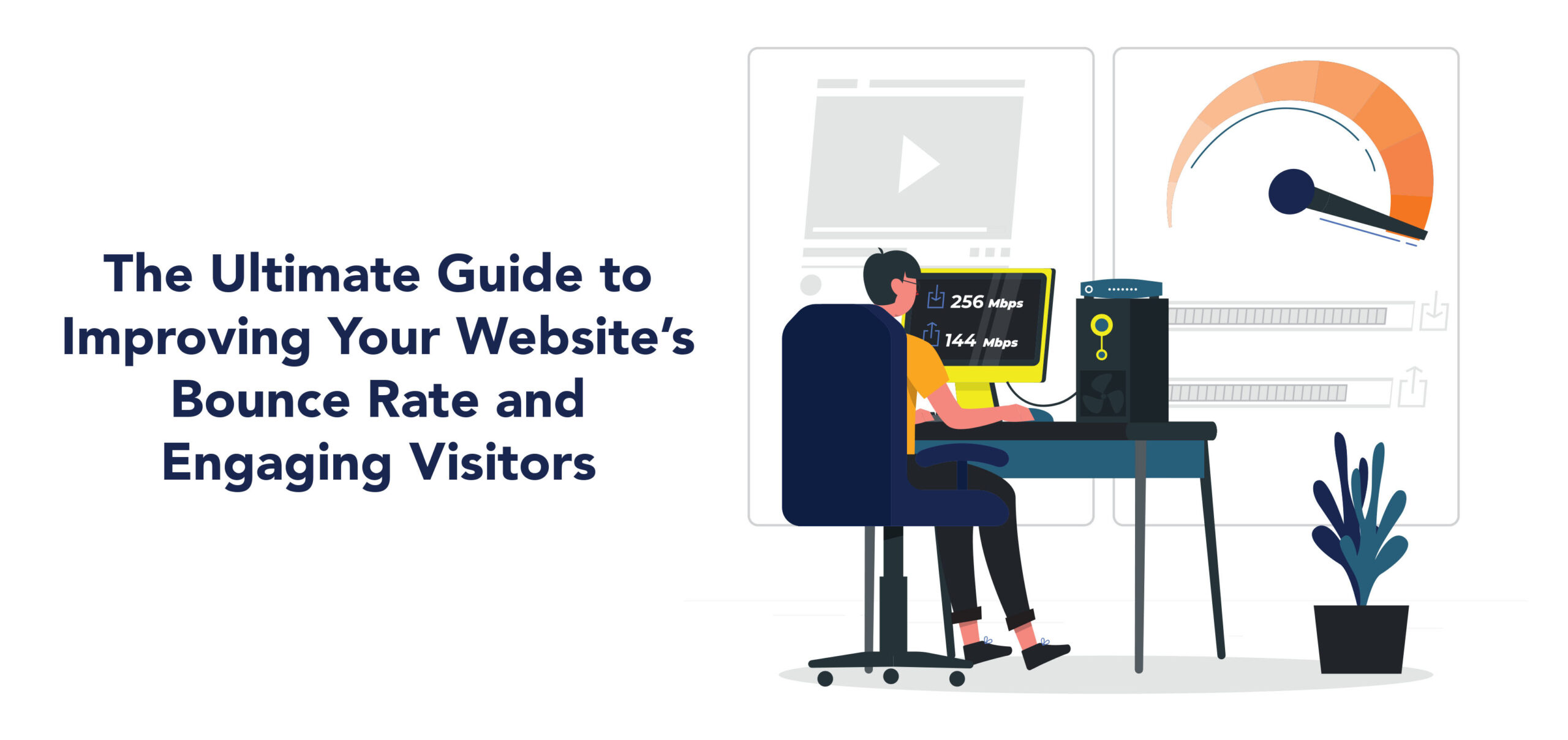
The Ultimate Guide to Improving Your Website’s Bounce Rate and Engaging Visitors
Posted on October 5, 2023
-
Category:
- Atlanta Marketing,
- Atlanta Web Design,
- Web Development
What is Bounce Rate?
Bounce rate is one of the most critical metrics in web analytics. It calculates the percentage of visitors who land on your website and then leave without navigating to another page on the same website. Essentially, it gauges your website’s first impression effectiveness. A high bounce rate indicates that, for some reason, your website failed to entice the visitor to stay and explore further.
Why Reduce the Bounce Rate?
A lower bounce rate is synonymous with better user engagement. Think of each “bounce” as a missed opportunity: a potential customer, client, or follower that you didn’t connect with. When your bounce rate is high, it indicates that visitors might not be finding what they expect or desire. This can lead to reduced conversions, fewer sales, and a weaker online presence. Conversely, reducing your bounce rate means more engaged visitors, potentially leading to more conversions, higher sales, and stronger brand recognition.
What is a Good Bounce Rate?
The answer varies by industry and website type. On average, bounce rates typically range from 26% to 70%. Anything below 40% is generally seen as excellent, while above 55% might indicate room for improvement. However, it’s vital to benchmark against industry peers because a good bounce rate for a news site may differ from that of an e-commerce platform.
19 Tips to Reduce Bounce Rate on Your Website
1. Understand User Behavior
Before making any changes, you must understand your audience. Use tools like Google Analytics or Hotjar to gather data on where your visitors come from, what they’re looking for, and why they might be leaving. By understanding their behavior, you can cater to their needs more effectively.
2. Design for User Experience
3. Make the Site’s Navigation Easy
A site with logical and straightforward navigation ensures that users don’t get lost or frustrated. Group related pages under appropriate menus, use clear labels and always include a home button.
4. Ensure the Website is Responsive and Accessible
5. Check the Readability Score of Content
6. Optimize Product Pages for Relevance
For e-commerce sites, the product page is sacred ground. It should have high-quality images, clear descriptions, and an unmistakable call to action. Ensure that the information is relevant and that the page isn’t overloaded with unnecessary details.
7. Build Specific Landing Pages
8. Target the Right Visitors
9. Publish Your Blog Regularly
10. Use Videos and Imagery
11. Plan Your Content Marketing Calendar
Consistency is key. Plan your content in advance to ensure a steady stream of fresh, relevant material. Diversify your content types to cater to different segments of your audience.
12. Optimize Internal Linking Structure
Encouraging users to explore your site can be as simple as providing links to related content. This not only enhances user experience but also increases the time spent on your site, in addition to helping with your website’s overall SEO strategy.
13. Use Interactive Content
Interactive content like quizzes, polls, and infographics engage users and encourage them to interact with your site, reducing the likelihood of them bouncing.
14. Show Credibility Through Trust Symbols
Trust symbols, whether they’re security badges, certifications, or customer testimonials, can significantly boost a visitor’s confidence in your site, making them more likely to engage.
15. Optimize Page Load Time
16. Make the Site Easy to Search
A simple search function can drastically improve user experience, allowing visitors to find the content they’re interested in without navigating through multiple pages.
17. Include Clear CTA’s Throughout the Site
Every page should have a purpose. Ensure that the purpose is clear to the visitor by incorporating unmistakable calls to action that guide them through their journey on your site.
18. Implement Exit-Intent Popups
19. Monitor, AB Test, and Optimize
The online landscape is ever-changing. Regularly monitor your site’s performance, conduct A/B tests to see what works best, and optimize accordingly.
Bounce Rate and SEO
While bounce rate isn’t a direct ranking factor for Google, it does indirectly affect your SEO. High bounce rates can signal to search engines that your site might not be relevant or useful to visitors, potentially impacting your ranking. By improving user experience and ensuring content relevancy, you not only improve bounce rates but also enhance your site’s SEO.

